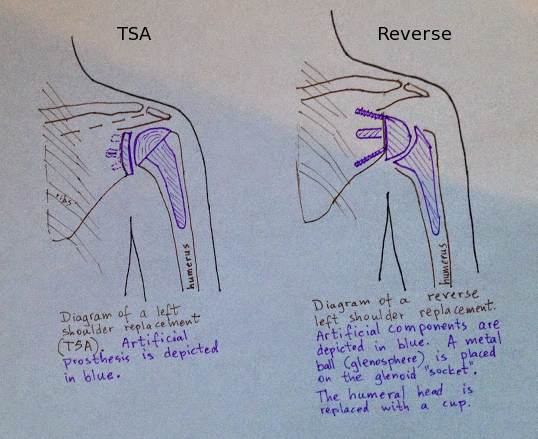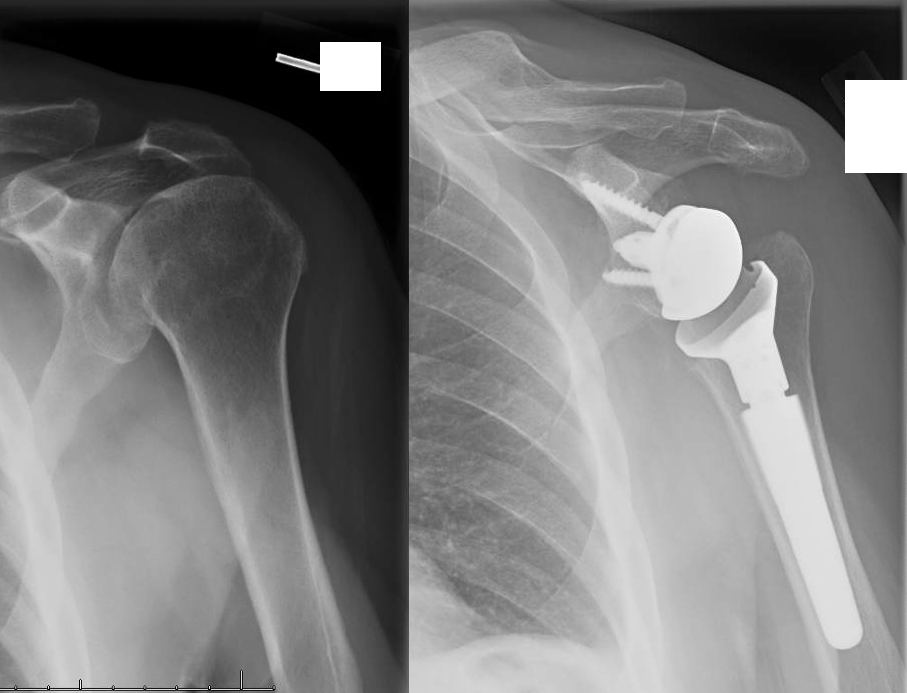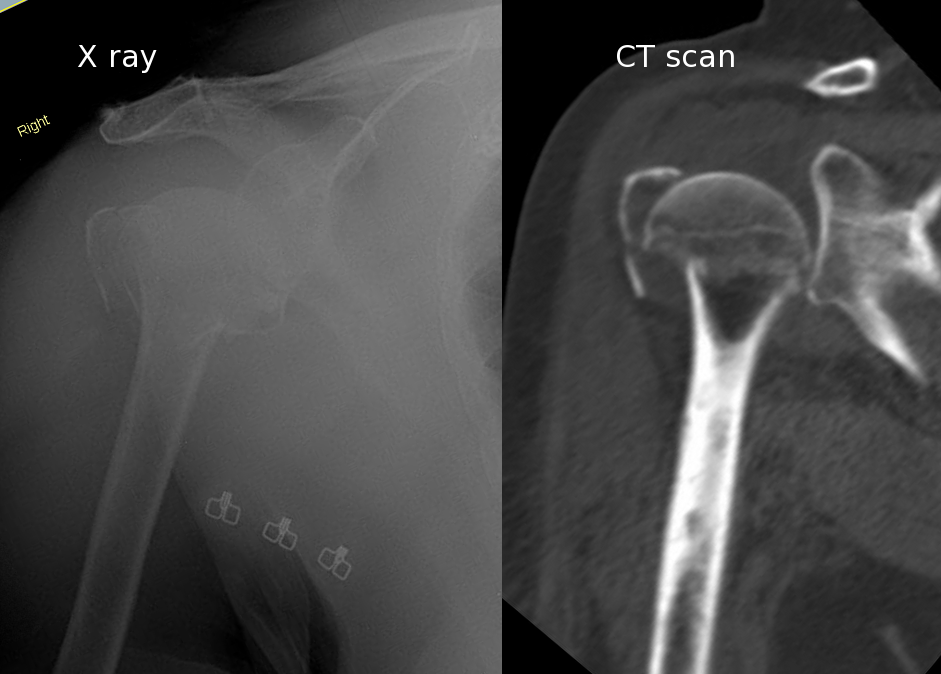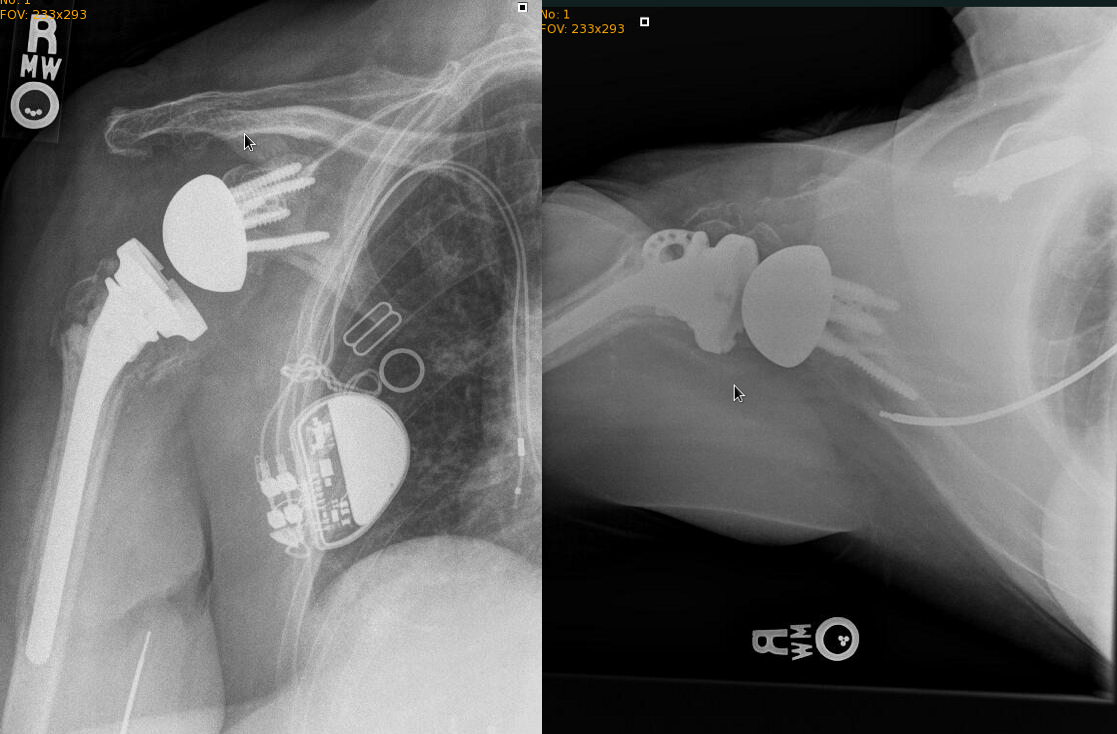Reverse shoulder replacement is a better type of shoulder replacement when the rotator cuff is dysfunctional, or is expected to be dysfunctional.
What is a reverse shoulder replacement?
A reverse shoulder replacement is a type of shoulder replacement. What makes it reverse is this: the socket of the joint is replaced with a ball, and the ball of the joint is replaced with a socket.
In a regular shoulder replacement (TSA) the head of the humerus is replaced with a metallic head, and the cartilage of the glenoid is replaced with a layer of plastic.
To reiterate: in a reverse shoulder replacement the location of the ball and socket are reversed: the glenoid socket is replaced with a metal sphere (glenosphere), and the original round humeral head is replaced with a socket.
Like a regular shoulder replacement, a reverse shoulder replacement is performed by using power saws, reamers, chisels, etc., to remove bone from both sides of the glenohumeral joint. The removed bone is then replaced with artificial materials.

Why reverse the location of the ball and the socket?
When the rotator cuff cannot be counted on to keep the head of the humerus centered on the glenoid, a regular shoulder replacement will result in superior migration of the humeral head, subacromial impingement, and continued inability to raise the arm.
A reverse shoulder replacement addresses the problem by providing a mechanical barrier to the proximal migration of the humerus: The artificial ball on the glenoid acts as a pivot point which allows the deltoid muscle to elevate the arm. A reverse shoulder replacement therefore allows better motion in cases of rotator cuff arthropathy or in certain cases of comminuted proximal humerus fractures.
In the setting of severe glenohumeral arthritis with weak or torn rotator cuff tendons, a regular shoulder replacement will fail to provide adequate pain relief.
In cases of comminuted proximal humerus fractures, treatment with plate and screws has a high likelihood of failure, and hemiarthroplasty (partial replacement) has been the historical alternative treatment in order to avoid hardware failure. However, patients who receive hemiarthroplasty in this circumstance often suffer from rotator cuff deficit because the attachment points for the rotator cuff never heal. Therefore reverse replacement may be the better solution to this problem.
What are the risks of reverse shoulder replacement ?
Here is a list of risks of reverse shoulder replacement:
- All the risks of regular shoulder replacement surgery:
- Death
- Infection
- Periprosthetic fracture
- Loosening of prosthetic components
- Nerve damage.
- Glenoid loosening, notching, and fracture, are all risks of this surgery.
- Dislocation of the artificial joint is a possibility as well.
- Delayed acromion fracture is a problem that sometimes occurs after a reverse shoulder replacement. The acromion is where the deltoid muscle attaches, and after a reverse replacement, the deltoid is the only muscle raising the arm up and can sometimes stress the acromion too much.
What is the recovery like after this surgery?
- Typically patients spend 1 night in the hospital
- During the 1st 6 weeks gentle physical therapy may be started, without any strengthening exercises.
- More vigorous physical therapy and strengthening exercises during weeks 7-12 after surgery.
- Activities such as contact sports, etc., are not allowed, for life.
Case study: RSA for rotator cuff arthropathy
The xrays below are from a patient with left sided rotator cuff arthropathy. Patient presented with chronic shoulder pain and difficulty raising arm.

On the left is the pre-surgery appearance of the left shoulder. Note the new distal location of the humerus compared to the situtation before surgery.
Case study: proximal humerus fracture treated with RSA

This patient initially elected to not have surgery. Approximately 3 weeks later she reevaluated her situation and sought surgical treatment due to continued severe pain. The reverse shoulder replacement was done over 1 month after the injury.
Reverse shoulder replacement resulted in quick improvement.
Range of motion after reverse replacement is expected to be less than the full natural range of motion of the shoulder joint. This patient was able to raise the arm above the shoulder level. She became able to wash her face, comb her hair, and feed herself within 1 month. She was able to drive 6 weeks after surgery.
This is the xray appearance approximately 2 years later.
